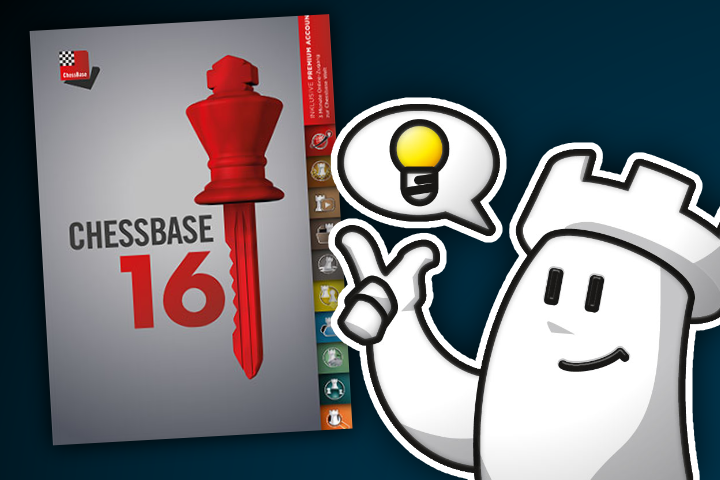


It is easy to gloss over this most basic of tools in ChessBase, yet it is impossible to overstate its usefulness and importance. Annotating a game may sound easy, and it is, but there is a huge array of tools that go far beyond adding mere exclamation points, question marks or adding a variation. In this first tutorial, we will indeed cover the fundamentals as they are the bread and butter of all ChessBase users.
When you open a game, the first thing you are presented with is a board, the notation, and the headers.

The most basic annotation is usually the traditional '!' for a strong move, '?' for a bad move, etc. There are literally at least five different ways to add these to a move, but let's stick with the most basic.
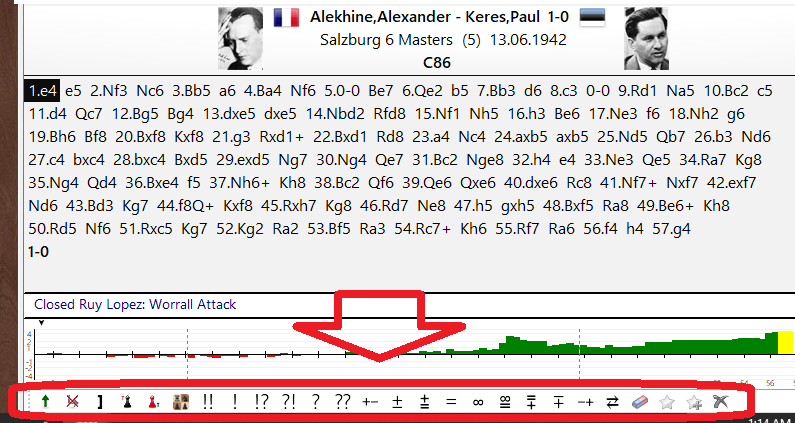
At the bottom of the notation is a detailed toolbar with all the most used marks. Just click on one and it will be appended to the move.
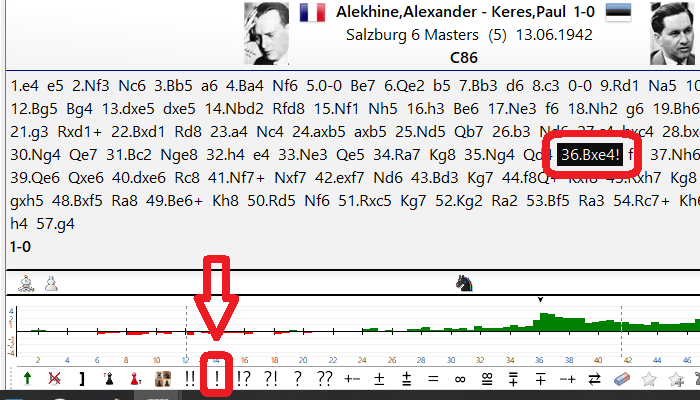
For example, here I added an exclamation point to the 36th move by Alekhine against Keres by clicking on the '!' in the toolbar.
Special tip: If you just type the symbol '!' or '?' on your keyboard, a small menu will open asking to confirm it, and will be added to the move without a single mouse-click. Yes, really!
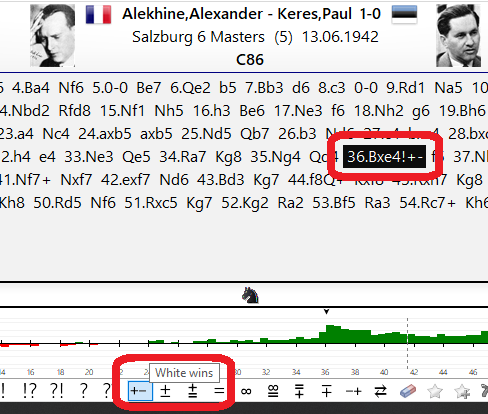
You can also add the traditional evaluation symbols this way too.
The timeless periodical magazine/book Chess Informant introduced a system of symbols so that its wordless annotations could still be detailed and utterly international, without requiring 28 different translations to be accessible to players around the world. You can easily access these and add them to your game via the Annotation Palette.

At the top, in Insert, click on Annotations. Better yet, use the shortcut Ctrl-Alt-S. This opens up the simple, yet elegant Annotation Palette with all the symbols grouped into a single place. If you are unsure which is what, just mouse over and a mousetip will tell you.
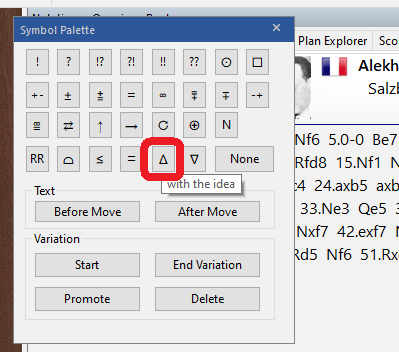
The most expressive form of commentary is simply that of the written word, where a player can add not only their plans and thoughts, but their fears, hopes, and whatever they desire.
Adding a text comment to a move is as simple double-clicking on it. You can specify a language so that you can add comments in several and choose which ones you want to use, or just stick in 'All'.
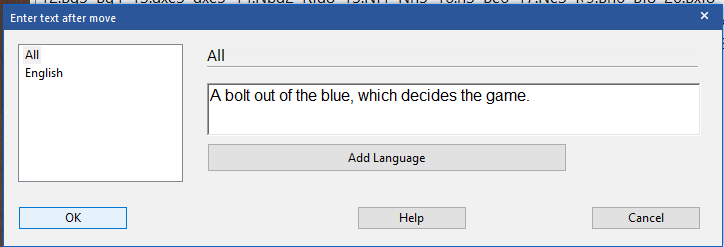
You might also wish to add text before a move. This is useful if you want to add a comment before a new line of thought, or at the start of a game as an introduction.

To do this, the two simplest ways are to either click on the black pawn icon in the annotation toolbar...

... or right-click on the move and choose Text Before Move.
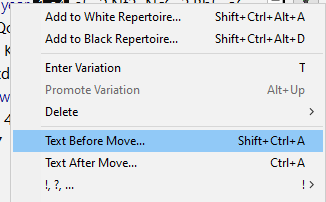
So why so many different ways to do these basic tasks? Simply because every person has their own preferred way of doing things, whether in a toolbar, using keyboard shortcuts, and more.
Click here to purchase ChessBase 16 in the ChessBase Shop
In the next tutorial, we will look at the many ways of entering variations, ordering them, deleting them and even adding several moves for just one color.